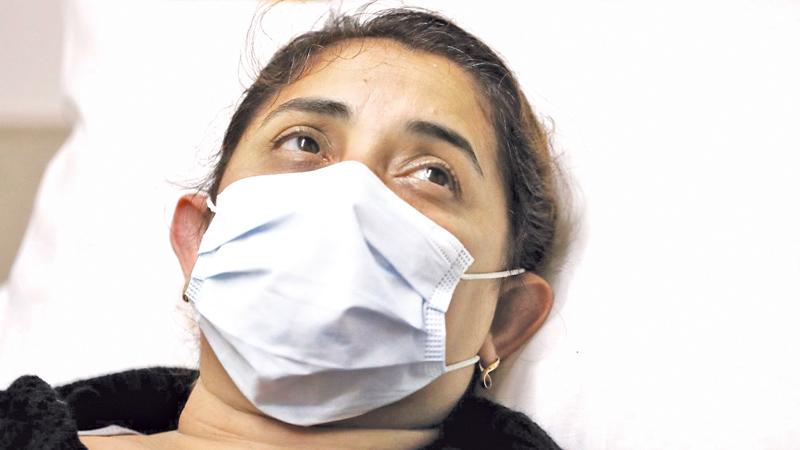
It is a simple but aggressive flu that has travelled across many Continents over the years. In 2016 , the Express paper in the UK carried a headlined warning from scientists with regard to its deadly strains. Dated September 30, the article stated that the deadly strains of Asian flu could kill as many as 11,000 people in Europe that winter.
To the already agitated and panicked European population, which had been receiving prior warnings a month or two before, the researchers added that the two new viruses which were much more virulent than previous viruses, had crossed its Asian borders of Hongkong and Phuket, and were expected to hit the Continent in December, making it a dismal, sniffling sick Christmas for most.
So what is this flu that strikes indiscriminately causing illness, some serious enough to result in hospitalization and even resulting in deaths, especially, among the most vulnerable – the young, elderly and the chronically ill ?
Symptoms range from colds, coughs, fever, body aches, joint pains, nausea, headaches which could be mistaken for dengue except that it does not have the internal bleeding that dengue haemorrhagic fever has.
If neglected however, it can lead to upper respiratory illness and pneumonia, especially, in the elderly.
Indications that this year’s flu season could be nastier and more lethal than previous seasonal flu have raised concerns among health officials battling to reduce the number of victims which seem to be rising by the minute, judging from long waiting queues in hospital OPDs, according to internet reports.
They attribute this surge to the fact that this year’s influenza, a virus known as H3N12 is worse than the swine flu pandemic in 2009.
They have every reason to be concerned. According to reported statistics in some states like Arizona the figures of affected persons is said to be 75% more than last year’s corresponding flu season.
The Centre for Disease Control reported, the flu was widespread in 46 states as at January 29, in the US, the suspected victims hailing from California, Connecticut and Virginia.
Virus mutation
To make matters worse, frustrated researchers are now saying that the flu vaccine is not proving effective against this year’s seasonal flu because of virus mutation, the CDC report states.
In Australia which has just emerged from its flu season, concerns of another outbreak has caused widespread fears and demands for anti flu shots. However, here again, researchers have run into problems of the level of efficacy.
The New England Journal of Medicine for example, reports that the vaccine has been found to be effective only in ten percent cases! It admits that the vaccine now being administered to Americans has the same formulation.
Science writers and journalists meanwhile, have been quick to draw parallels with the terrifying global pandemic in1918, which ironically marks its hundredth anniversary this year to the day.
Also known as the Spanish flu, it affected 500 million people and killed 50 to 100 million – nearly 1/3 of the planet’s population then. In the US, over 25% of the population is said to have sickened and about 675,000 Americans died of it.
Will a universal vaccine be a reality in our lifetime?
With costs of care for the sick mounting relentlessly , (the CDC estimates the flu costs in the US is 10-4 billion a year in direct expenses and another $ 16.3 billion in lost earnings each year ) the race to make a universal vaccine is now on.
It notes that a “chunk of those billions is spent on formulating , growing and distributing millions of doses of the annual flu vaccine which reduces the risk of illness by 40% to 60% at best”.
It also adds that the flu vaccine is the only one that has to be reformulated and administered every year, most of the vaccines being grown in eggs, an arduous process that takes about six months”.
So is there an ideal vaccine?
Microbiologist at the Icahan University in New York, Mt Sinai, Peter Palese’s team claims they have already developed a universal flu vaccine, now in its first phase of testing in humans with the support of GSK and the Gates Foundation.
“What changes in the influenza virus from year to year is the haemaggluttinin ( HA), which is the major protein against which we make a hormone...”, Palese was quoted as saying.
“The HA comprises a head and a stalk. When our immune system sees a flu virus, it makes antibodies against the head . We want to direct the body’s immune system to the stalk”.
Can Lankans be affected?
Coming to our final and most important concern, we wondered if our local population could be at risk of the new European flu virus. Speaking on grounds of anonymity, a health source said Thursday, “Since this was not the normal flu season which we experience with the monsoon showers in April, and are experiencing only very mild drizzles at present, there is no need to panic or be overly worried.
But, you need to exercise caution and follow the Etiquette guidelines based on simple hygienic practices. We are now encouraging a very simple rule, everyone including children, can follow which does not require tissues or hankies which can also carry contamination as this is a highly infectious disease.
Just bend your elbow and bring it to your mouth when you cough so that the atmosphere does not get polluted or you don’t infect others”.
More details can be obtained in the Epidemiology Unit website or the Health Education Bureau website .
